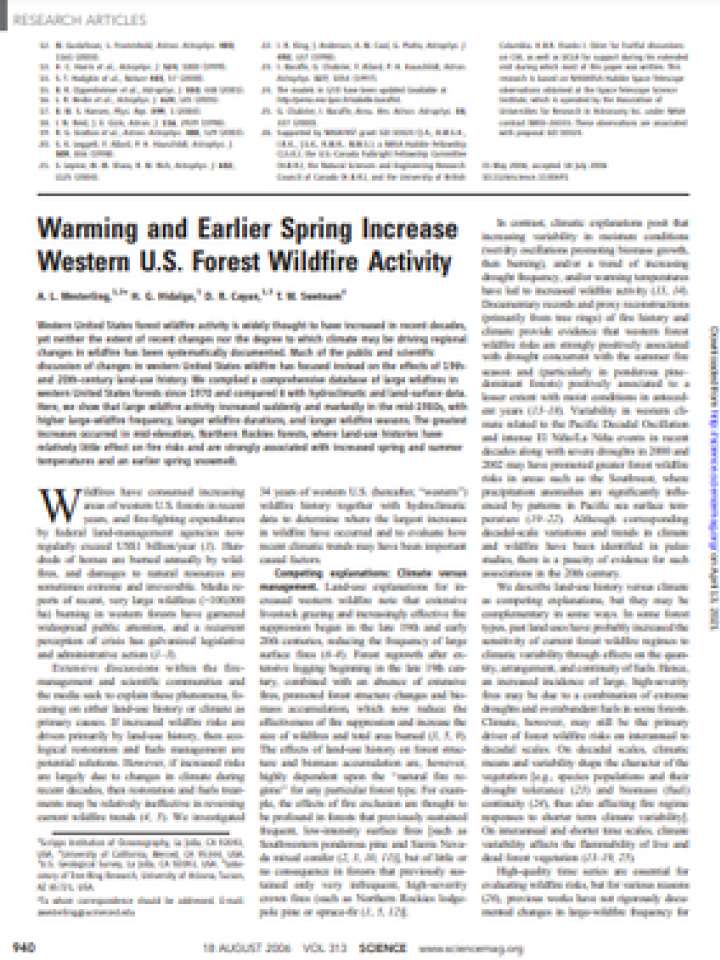Warming and earlier spring increase western U.S. forest wildfire activity
The authors compiled a comprehensive database of large wildfires in western United States forests since 1970 and compared it with hydroclimatic and land-surface data. Here, we show that large wildfire activity increased suddenly and markedly in the mid-1980s, with higher large-wildfire frequency, longer wildfire durations, and longer wildfire seasons. The greatest increases occurred in mid-elevation, Northern Rockies forests, where land-use histories have relatively little effect on fire risks and are strongly associated with increased spring and summer temperatures and an earlier spring snowmelt.
These results have important regional and global implications. Whether the changes observed in western hydroclimate and wildfire are the result of greenhouse gas–induced global warming or only an unusual natural fluctuation is beyond the scope of this work. Regardless of past trends, virtually all climate-model projections indicate that warmer springs and summers will occur over the region in coming decades. These trends will reinforce the tendency toward early spring snowmelt (36, 37) and longer fire seasons. This will accentuate conditions favorable to the occurrence of large wildfires, amplifying the vulnerability the region has experienced since the mid-1980s.
Explore further
